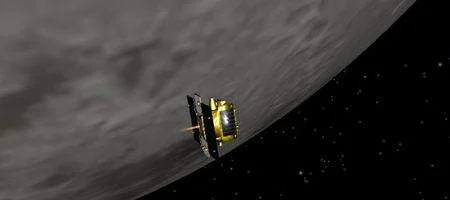NASA’s Grail mission to study the moon from crust to core has completed its main task ahead of schedule, gathering information about the internal structure and evolution of the moon in unprecedented detail.

The mission’s twin probes, Ebb and Flow, are now being prepared for extended science operations that will start at the end of August and continue until December 3.
Since March 8, the spacecraft have operated around the clock. From an orbit that passes over the lunar poles, they have collected data covering the entire surface three times. Using their onboard Lunar Gravity Ranging Systems, each spacecraft transmits radio signals that allow scientists to translate the data into a high-resolution map of the moon’s gravitational field.
“Many of the measurement objectives were achieved from analysis of only half the primary mission data, which speaks volumes about the skill and dedication of our science and engineering teams,” says Maria Zuber, principal investigator of Grail at MIT.
“GRAIL delivered to Earth over 99.99 percent of the data that could have been collected, which underscores the flawless performance of the spacecraft, instrument and the Deep Space Network,” said Zuber.
Both spacecraft instruments will be powered off until August 30. The scientists say they’re not concerned about the lunar eclipse expected on June 4 and its associated darkness and sudden changes in temperature.
“Before launch, we planned for all of GRAIL’s primary mission science to occur between lunar eclipses,” said David Lehman, Grail project manager.
“But now that we have flown Ebb and Flow for a while, we understand them and are confident they can survive these eclipses in good shape.”
The extended mission will see the spaceships taking an even closer look at the moon’s gravity field, halving their current operating altitude to fly as close to the moon as is safe.
“Orbiting at an average altitude of 14 miles (23 kilometers) during the extended mission, the GRAIL twins will be clearing some of the moon’s higher surface features by about five miles (8 kilometers),” says Joe Beerer, GRAIL’s mission manager.
“If Ebb and Flow had feet, I think by reflex they’d want to pull them up every time they fly over a mountain.”






